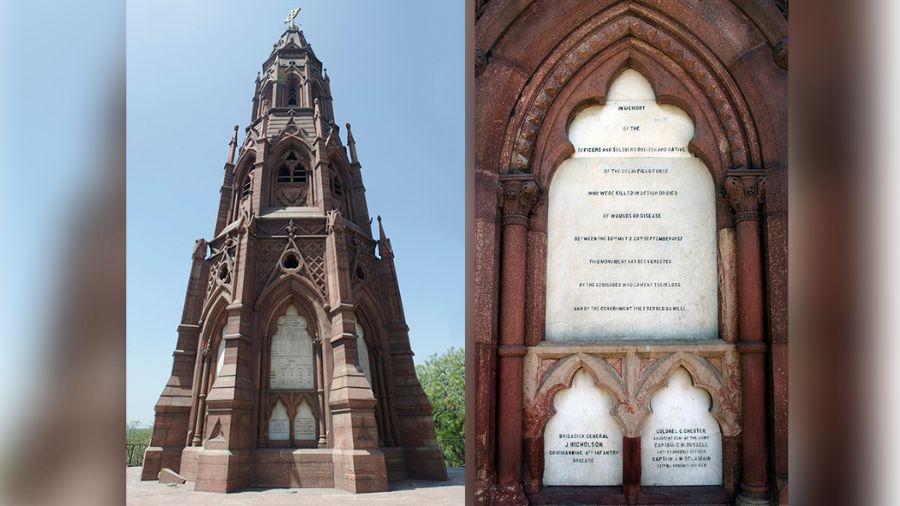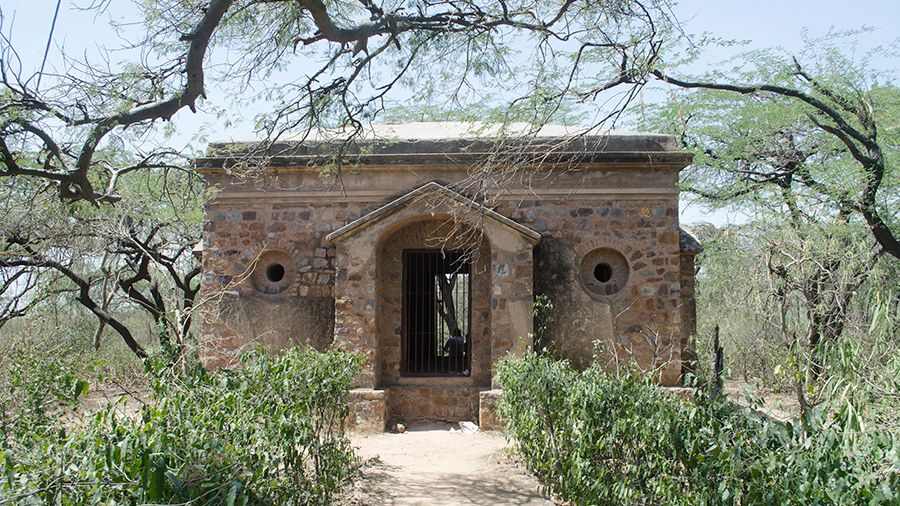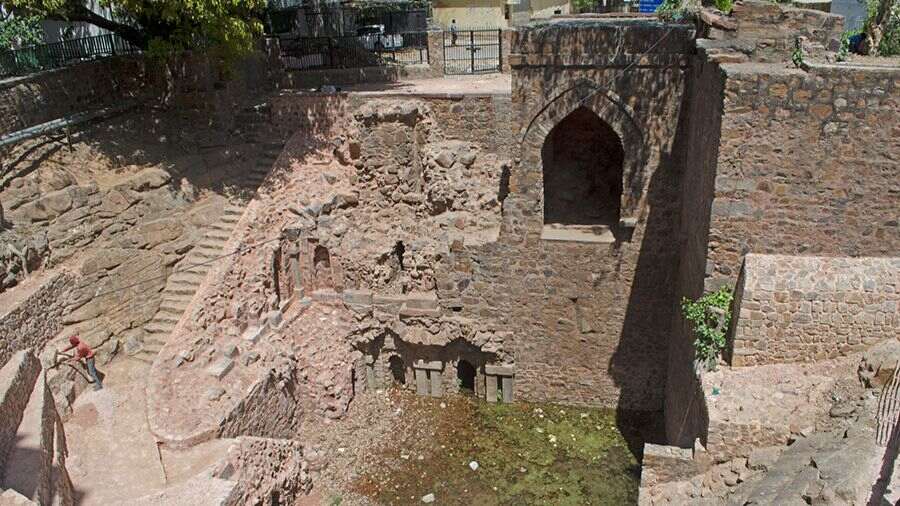Delhi ridge, or simply the ridge, is an extension of the ancient Aravalli Range. Running from north to south, it is a barrier against hot desert winds from Rajasthan, and also provides much needed green cover and oxygen to the city thanks to its light forest cover. The ridge spans the entire length of Delhi, but in fragmented sections — South Ridge in the Tughlaqabad area, South-Central in the Mehrauli area, Central in the New Delhi area, and Northern Ridge in the Delhi University area.
Also known as Kamala Nehru Ridge, the Northern Ridge is the smallest and is rapidly shrinking. A walk here uncovers an interesting mix of natural and historical sites, which include an assortment of monuments that date from the pre-Mughal to the British period.
Start from the Pul Bangash metro (red line) station. The ridge is located north of the metro station and a narrow, gently inclining road goes northward through the centre of the ridge. Kids play cricket and football in the open spaces on either side, while cars whizz by. Tucked between these everyday city sights are nuggets from history.
Mutiny Memorial

The first stop is the Mutiny Memorial, a Gothic-styled tapering monument in red sandstone built in memory of the British soldiers lost during the Revolt of 1857. With its architectural style, it seems out of place in between the domes and rooftops of Old Delhi.
The octagonal memorial has a gateway on one side with stairs leading to the top and marble inscriptions on the other sides. One briefly narrates the significance of the memorial while the other six have the names of the dead, missing and wounded. In 1972, on the occasion of the 25th year of Independence, the Mutiny Memorial was renamed as Ajitgarh and a plaque was added to the base of the memorial with details in Hindi, English Urdu and Punjabi, which says that the ‘enemy’ mentioned in the memorial were actually Indian freedom fighters.
Ashokan Pillar

Just a little distance away is the Ashokan Pillar, the second one in Delhi — the other is at Froz Shah Kotla. Both pillars were actually transferred to Delhi by Feroz Shah Tughlaq and not constructed here. The one at the ridge was brought from Meerut. Much later, during the reign of Mughal ruler Farrukhsiyar, the pillar was severely damaged. The five broken pieces were shifted to Asiatic Society of Bengal in Kolkata, where they were assembled and then reinstated in Delhi in 1867. Joining marks can still be seen to this day.

Eastern Guard House
Rangan DattaOpposite the Ashokan Pillar is the gate of the Hindu Rao Hospital, which is one of those unusual locations in Delhi where old monuments can be found. In this case, the complex has two Archaeological Survey of India (ASI) protected structures — a hunting house and a stepwell.
Pir Ghaib

Known as Pir Ghaib, this hunting lodge was also constructed during the time of Feroz Shah Tughlaq. It was the base for his hunting explorations in the dense forest that covered the ridge at that time. It's possible that later it served as a mosque and even as an astronomical observatory. It was also the residence of an ascetic, a pir, who is then said to have mysteriously disappeared, and that’s where the ruined structure gets its name.

Hindu Rao 'baoli'
Rangan DattaNext to the ruined structure of Pir Ghaib are the ruins of a stepwell, or a baoli. Though missing staircases, there are some ornamental elements, such as the arches, that can still be seen.
Chauburja Mosque

Beyond the hospital complex, the northbound road goes to the upper reaches of the ridge to the Northern Ridge biodiversity park. Next to the park entrance is the Chauburja Mosque, also built by Feroz Shah Tughlaq. The name translates to ‘a mosque with four domes,’ however only one dome survives today.
Flagstaff Tower

The road continues inside the park, which is a car-free zone. Past the canopy of trees it goes to the highest point of the ridge, which has the colonial-era Flagstaff Tower. A small diversion before the tower leads to the Southern Guard House, which is a small rectangular structure with a pedimented roof. This guard house along with the Flagstaff Tower were part of the cantonment area of the British East India Company. Though called a tower, the structure is a circular, stout building. It is a castellated tower, built in 1828 as a signal tower. It was also the location of many battles during the Great Revolt.
From the Flagstaff Tower an eastward trail descends leading outside the park and to the plains of the city, and the trail ends at Bidhan Sabha metro station (yellow line).
Rangan Datta is a mathematics and management teacher by profession and a travel writer and photographer by passion. He has been addicted to discovering off-beat places since his undergraduate days at St. Xavier's College. Blogging and contributing to Wikipedia are his other passions.








